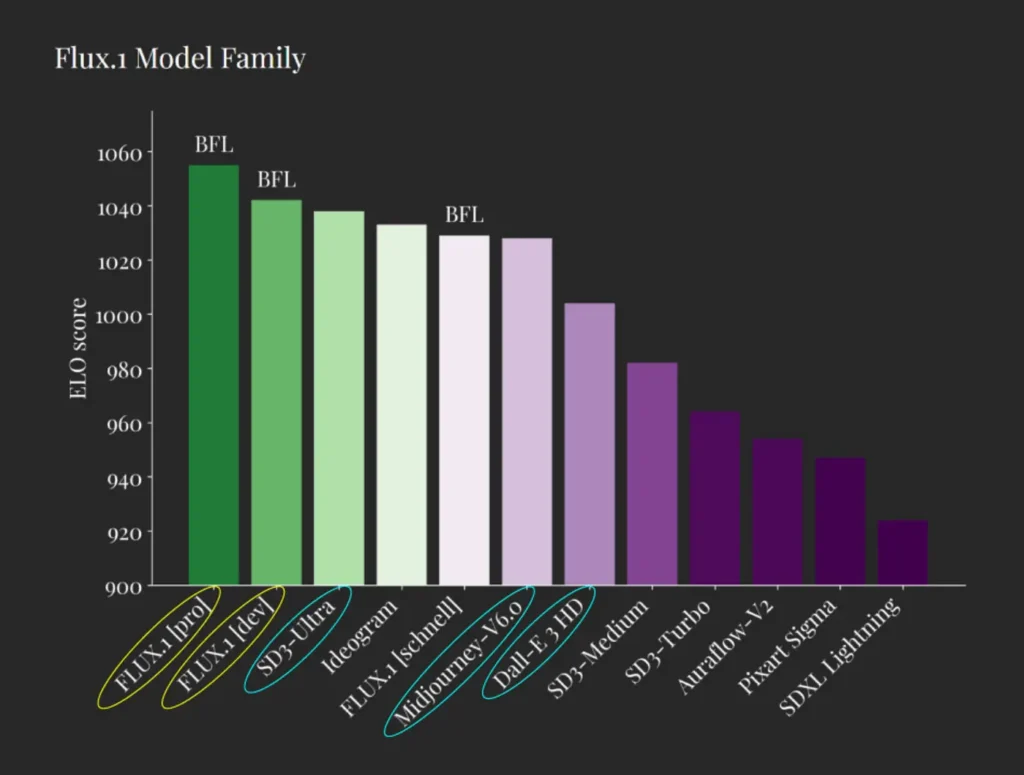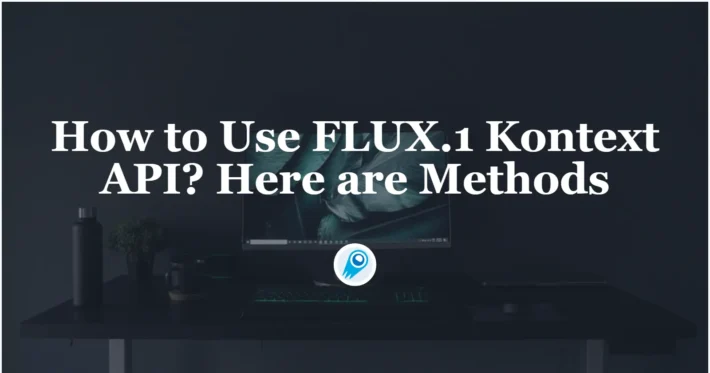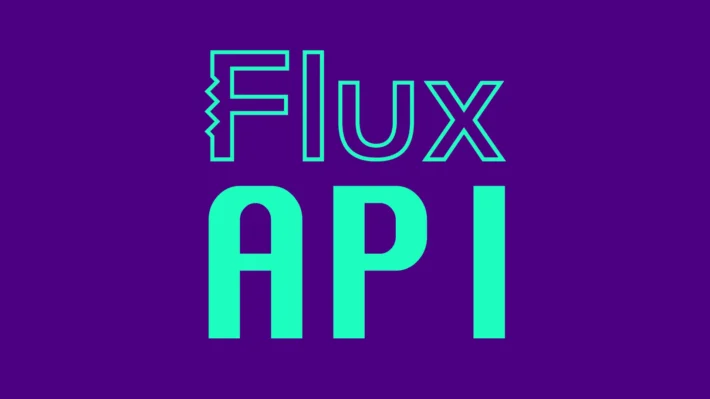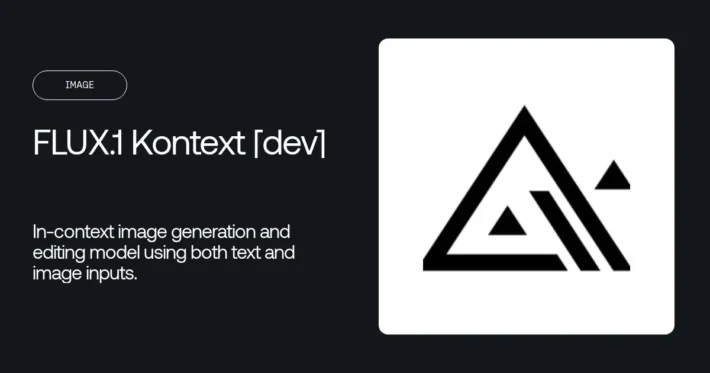The FLUX.1 [dev] API provides developers with a streamlined interface to integrate advanced text-to-image generation capabilities into custom applications using the open-weight, guidance-distilled FLUX.1 [dev] model.
![FLUX.1 [dev]](https://www.cometapi.com/wp-content/uploads/2025/03/Flux.1-dev-Controlnet-Upscaler-1024x553.webp)
Understanding the Core
At its essence, FLUX.1 [dev] is an open-weight, guidance-distilled model within the FLUX.1 family, engineered to transform textual prompts into high-fidelity images with remarkable accuracy. The FLUX.1 [dev] API, succinctly described, provides developers with a streamlined interface to integrate advanced image generation capabilities into custom applications. Available with full model weights on Hugging Face and inference code on GitHub, it stands as a beacon of accessibility in the AI landscape. Unlike its proprietary counterpart, FLUX.1 [pro], this development variant prioritizes transparency and adaptability, making it a preferred choice for experimentation and research.
The model’s design emphasizes steerability, enabling users to exert fine-grained control over the output through text prompts and structural conditioning tools. This balance of power and openness positions FLUX.1 [dev] as a versatile tool for both academic exploration and practical deployment.
The Evolutionary Path
The journey of FLUX.1 [dev] reflects a deliberate evolution rooted in xAI’s mission to accelerate human scientific discovery. Building upon foundational advancements in generative AI, this model emerged from iterative refinements of earlier text-to-image frameworks. Its development incorporated guidance distillation, a technique that enhances efficiency without compromising output quality, distinguishing it from bulkier predecessors.
Initially conceptualized to complement the high-performance FLUX.1 [pro], the [dev] variant evolved to cater to a broader audience, prioritizing open access over proprietary constraints. Partnerships with platforms like fal.ai, Replicate, and Together.ai further amplified its reach, embedding it within a thriving ecosystem of AI tools. This evolutionary trajectory underscores a strategic blend of innovation and community engagement, ensuring FLUX.1 [dev] remains at the forefront of AI progress as of March 10, 2025.

Technical Architecture and Indicators
The technical backbone of FLUX.1 [dev] is a testament to its sophistication. Built on a transformer-based architecture, it leverages advanced diffusion models to synthesize images from text inputs. The incorporation of guidance distillation reduces computational overhead, achieving a favorable balance between resource efficiency and output fidelity. Key technical indicators include:
- Inference Speed: Optimized for rapid processing, averaging under 10 seconds per image on standard GPU hardware.
- Resolution Support: Capable of generating images up to 1-megapixel natively, with scalable options via partner integrations.
- Parameter Count: A streamlined model size compared to FLUX.1 [pro], facilitating deployment on diverse systems.
- Diversity Score: Benchmarks indicate a high degree of output variation, surpassing many open-source competitors.
These metrics highlight FLUX.1 [dev]’s ability to deliver high-quality results while maintaining accessibility, a critical factor for developers working within resource-constrained environments.
Advantages of FLUX.1 [dev] for Developers and Researchers
The appeal of FLUX.1 [dev] lies in its multifaceted advantages, tailored to the needs of its target audience. First and foremost, its open-access nature eliminates financial barriers, allowing developers and researchers to experiment without licensing costs. The availability of full model weights and inference code fosters customization, enabling users to fine-tune the model for specific use cases or integrate it into bespoke workflows.
Additionally, its compatibility with structural conditioning tools—such as those in the FLUX.1 Tools suite—enhances its versatility. Whether inpainting with FLUX.1 Fill or applying depth-aware edits with FLUX.1 Depth, users benefit from a cohesive ecosystem that amplifies creative potential. Compared to proprietary alternatives, FLUX.1 [dev] offers comparable performance with greater transparency, making it an authoritative choice for those prioritizing reproducibility and collaboration.
Integration with FLUX.1 Tools Suite
The synergy between FLUX.1 [dev] and the FLUX.1 Tools suite elevates its utility to new heights. This suite, comprising FLUX.1 Fill, Depth, Canny, and Redux, extends the base model’s capabilities into advanced image modification domains. For instance:
- FLUX.1 Fill [dev]: Provides state-of-the-art inpainting and outpainting, accessible via Hugging Face weights.
- FLUX.1 Depth [dev]: Enables depth-guided transformations, preserving structural integrity.
- FLUX.1 Canny [dev]: Utilizes canny edge detection for precise edits.
- FLUX.1 Redux: Facilitates image variation and restyling with text prompts.
These tools, available under the same Flux Dev License, integrate seamlessly with FLUX.1 [dev], offering developers a comprehensive toolkit for image processing innovation. This interconnected framework ensures that users can transition effortlessly between generation and modification tasks.
Application Scenarios for FLUX.1 [dev]
The practical applications of FLUX.1 [dev] span a wide array of domains, reflecting its adaptability and power. Below are key scenarios where it excels:
Digital Art and Design
Artists and designers leverage FLUX.1 [dev] to create original artwork from textual descriptions, streamlining ideation and prototyping. The model’s ability to incorporate structural guidance ensures that outputs align with creative visions, making it a staple in digital studios.
Academic Research
Researchers utilize FLUX.1 [dev] to study generative AI behaviors, benefiting from its open weights to analyze model performance and refine algorithms. Its efficiency supports large-scale experiments, advancing the field of AI-driven creativity.
Game Development
Game developers integrate FLUX.1 [dev] to generate concept art and textures, accelerating asset creation. The FLUX.1 Tools suite further aids in refining assets, such as retexturing 3D models with FLUX.1 Depth, enhancing production pipelines.
Content Creation and Marketing
Marketers employ FLUX.1 [dev] to produce visual content tailored to campaigns, leveraging its speed and customization options. The ability to restyle images with FLUX.1 Redux ensures brand consistency across diverse media.
These scenarios underscore FLUX.1 [dev]’s role as a transformative tool, bridging technical prowess with real-world utility.
Related topics:Best 3 AI Music Generation Models of 2025
Performance Benchmarks and Comparisons
Rigorous benchmarking solidifies FLUX.1 [dev]’s standing in the AI ecosystem. In head-to-head comparisons with open-source models like Stable Diffusion and proprietary systems like Midjourney, FLUX.1 [dev] consistently delivers competitive image quality and efficiency. Publicly available benchmarks highlight:
- Superior inpainting accuracy with FLUX.1 Fill [dev] versus AlimamaCreative’s FLUX-Controlnet-Inpainting.
- Enhanced structural fidelity in FLUX.1 Depth [dev] compared to Midjourney ReTexture.
- Faster inference times than many bulky diffusion models, owing to guidance distillation.
These results position FLUX.1 [dev] as a leader in the open-access segment, offering authoritative performance metrics for developers to rely upon.
Getting Started with FLUX.1 [dev]
Adopting FLUX.1 [dev] is straightforward, thanks to its well-documented resources. Developers can access the model weights and inference code via GitHub and Hugging Face, with step-by-step guides available on the xAI website. Integration into existing workflows requires minimal setup—typically a Python environment with standard dependencies like PyTorch and Transformers.
For those seeking immediate deployment, partnerships with platforms like Replicate and fal.ai provide pre-built solutions, reducing onboarding time. This accessibility ensures that FLUX.1 [dev] is not just a theoretical asset but a practical tool for immediate use.
Future Prospects and Community Impact
Looking ahead, FLUX.1 [dev] is poised to drive further innovation within the AI community. Its open nature invites contributions, potentially leading to enhanced versions or novel applications. As xAI continues to refine the FLUX ecosystem, updates to [dev] will likely incorporate emerging techniques, maintaining its relevance in a fast-evolving field.
The model’s impact extends beyond technology, fostering a collaborative culture where knowledge sharing thrives. By empowering developers and researchers worldwide, FLUX.1 [dev] reinforces xAI’s vision of advancing collective understanding through AI.
Conclusion: A Cornerstone of AI Innovation
In summary, FLUX.1 [dev] stands as a cornerstone of open-access AI, blending technical excellence with practical utility. Its robust architecture, evolutionary design, and integration with FLUX.1 Tools make it an indispensable resource for developers and researchers. As it continues to shape the landscape of image generation and modification, FLUX.1 [dev] exemplifies the power of transparency and innovation, solidifying its authority in the AI domain as of March 10, 2025.
How to call FLUX.1 [dev] API from CometAPI
1.Log in to cometapi.com. If you are not our user yet, please register first
2.Get the access credential API key of the interface. Click “Add Token” at the API token in the personal center, get the token key: sk-xxxxx and submit.
3. Get the url of this site: https://api.cometapi.com/
4. Select the FLUX.1 [dev] endpoint to send the API request and set the request body. The request method and request body are obtained from our website API doc. Our website also provides Apifox test for your convenience.
5. Process the API response to get the generated answer. After sending the API request, you will receive a JSON object containing the generated completion.




